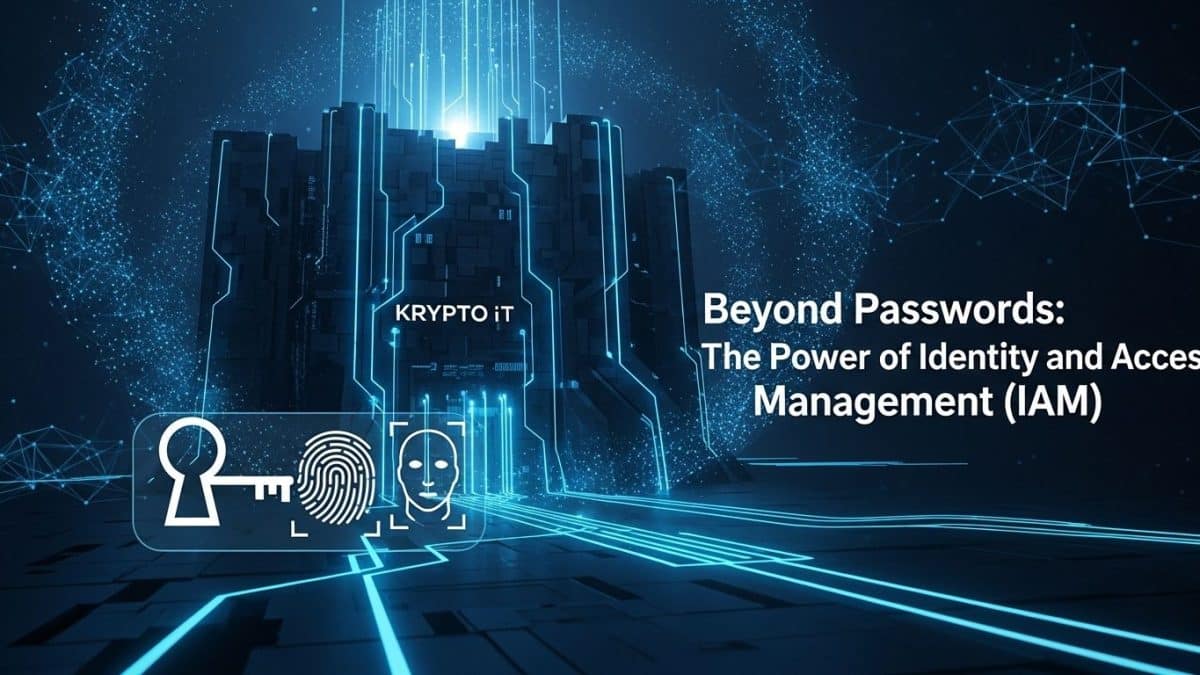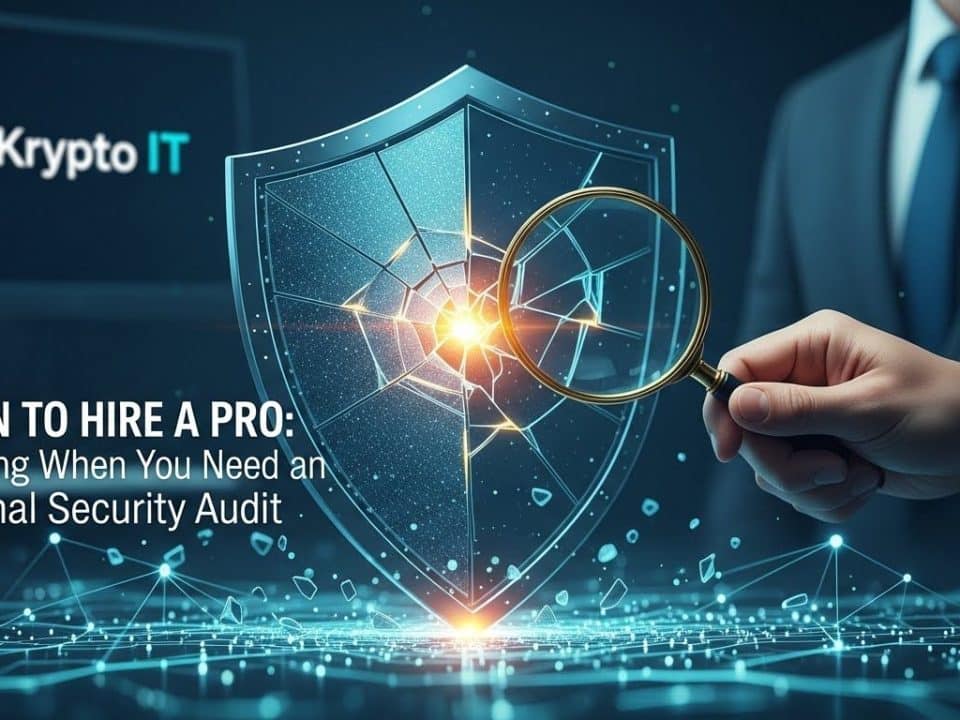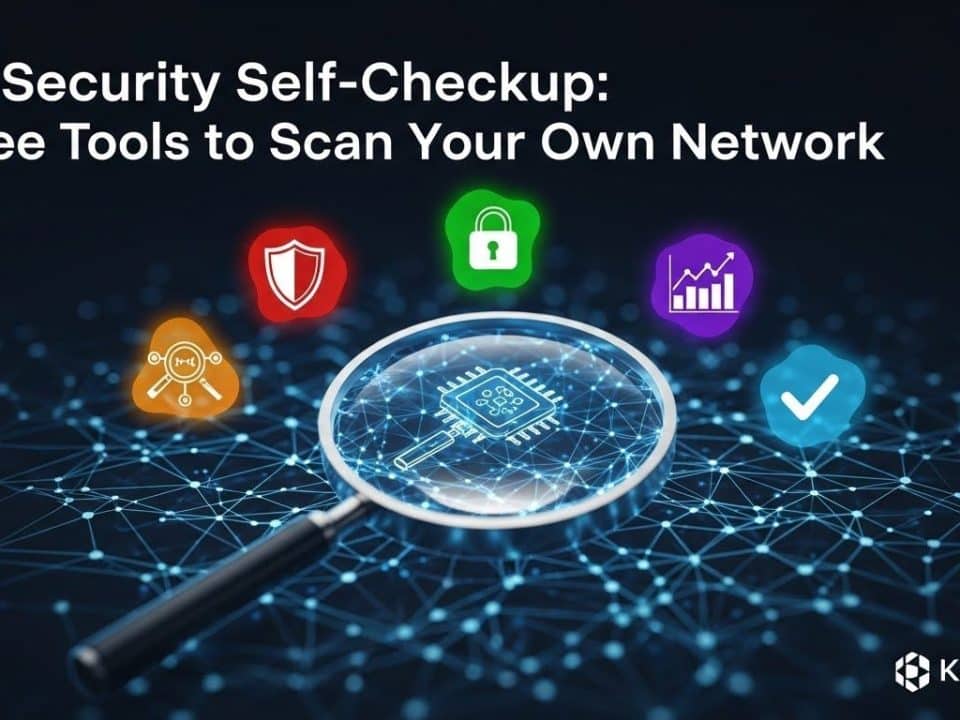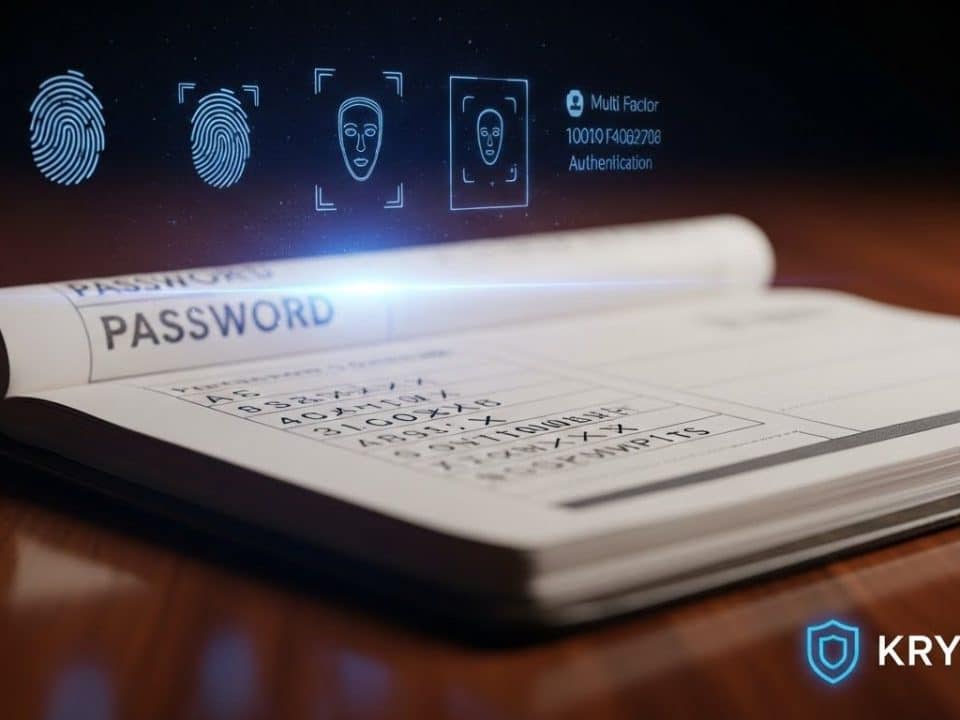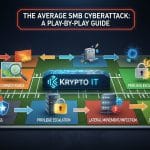
The Average SMB Cyberattack: A Play-by-Play Guide & Why You Need a Pro
October 25, 2025
Vendor Vetting: Securing Your “Digital Supply Chain”
October 27, 2025It’s time for a reality check: The password, as we know it, is dead.
For years, the foundation of every small to medium-sized business (SMB) security strategy was the password. We told our employees to make them long, complex, and unique. We made them change them every 90 days. But today, with massive data breaches and AI-driven attacks, the humble password is simply not enough.
In today’s complex, cloud-first world, security doesn’t start with a password—it starts with Identity and Access Management (IAM). For SMB owners overwhelmed by tech jargon, IAM is the crucial concept that dictates who can access what resources, when, and how. Ignoring it is like leaving your vault door unlocked and hoping a strong password will keep the gold safe.
As your Houston-based cybersecurity partner, Krypto IT knows that securing your business requires moving beyond basic login credentials. Here is a simple breakdown of IAM and why it is the most powerful tool in your defense stack.
The Fatal Flaws of the Password-Only Defense
Why is relying only on passwords a recipe for disaster in 2025?
- The Breach Multiplier: If an employee uses the same password for their work email and a personal streaming service that gets breached, hackers now have the key to your business network.
- The Human Factor: Employees get tired. They write passwords down. They choose predictable, easy-to-guess phrases. No amount of training can fully eliminate this human vulnerability.
- The Cloud Complexity: Your team accesses dozens of apps: Microsoft 365, Salesforce, QuickBooks, and collaboration tools. Managing unique credentials for all of them becomes an unmanageable burden, pushing employees toward bad habits.
- The Insider Threat: Even if a password isn’t cracked, if an employee leaves and their access isn’t immediately revoked from all services, they can still pose a risk.
IAM solves these problems by creating a complete digital identity perimeter around your business, rather than just locking individual doors.
What Identity and Access Management (IAM) Actually Does
Think of IAM as the central security brain for your organization. It ensures that every digital interaction—a log-in attempt, an attempt to open a file, or access to an app—is verified, authorized, and monitored.
IAM is built around a few key concepts that every SMB owner should know:
1. Single Sign-On (SSO)
This is the employee-friendly cornerstone of IAM. Instead of juggling 20 passwords for 20 applications, the employee logs in once using one secure method (often paired with Multi-Factor Authentication, or MFA). This single, strong credential gives them access to all approved corporate applications.
- Security Benefit: Reduces the number of passwords an employee has to manage, meaning they are more likely to make that single password incredibly strong.
- Productivity Benefit: Saves your team precious minutes every day, minimizing friction and frustration.
2. Multi-Factor Authentication (MFA)
MFA is non-negotiable. It requires a user to present two or more pieces of evidence to verify their identity. This usually involves something they know (password) and something they have (a code from an authenticator app or text message).
- The Power: MFA stops 99.9% of all automated credential stuffing and phishing attempts, making it the most effective single defensive measure against common hacking methods.
3. Least Privilege Access (LPA)
This principle dictates that every user, employee, contractor, or system should only have the minimum level of access required to perform their specific job function—nothing more.
- Example: A marketing intern doesn’t need access to HR payroll data or the CEO’s financial documents.
- Security Benefit: If a hacker compromises an intern’s account, their damage is contained only to the low-level resources the intern could access, preventing a company-wide disaster.
4. Automated Provisioning and Deprovisioning
This is critical for managing the lifecycle of employees. When a new hire starts, IAM automatically grants them access to the exact services they need (Provisioning). Crucially, when an employee leaves, IAM instantly and simultaneously revokes all their access across every application (Deprovisioning).
- Risk Mitigation: This eliminates the two-week lag time where a departing employee might still have access to your most sensitive data.
IAM: The Smart Investment for Scalable Security
For growing SMBs, implementing IAM is not just a security choice; it’s a strategy for efficiency and scalability. It moves your business from a state of constant firefighting (dealing with password resets and breach alerts) to one of proactive, centralized control.
Krypto IT partners with you to implement enterprise-grade IAM solutions that are simplified for your size and budget. We manage the complexity of configuring SSO, enforcing MFA, and defining Least Privilege Access policies so that your team can focus on what they do best: running your business.
Don’t wait until a single cracked password brings your entire operation to a halt. The time to upgrade your security foundation is now.
Secure your team’s identity. Secure your future.
Ready to Centralize Your Security and End Password Fatigue?
Contact Krypto IT today for a complimentary security assessment. Our Houston-based experts will evaluate your current identity posture and design a customized IAM roadmap to move your SMB beyond passwords and into a new era of proactive defense.
Call us at 713-526-3999 or visit www.kryptocybersecurity.com to get started.
Krypto IT is a leading Managed Service Provider (MSP) based in Houston, Texas, specializing in comprehensive cybersecurity and IT solutions designed specifically for the unique needs of small to medium-sized businesses.

